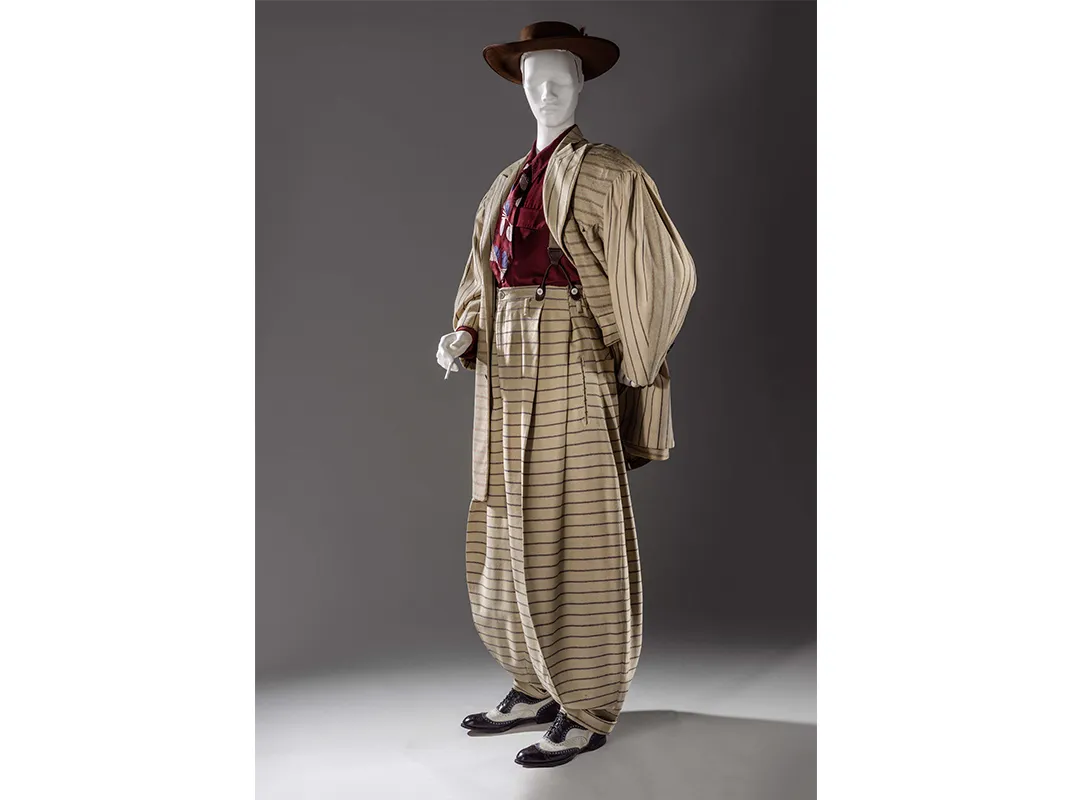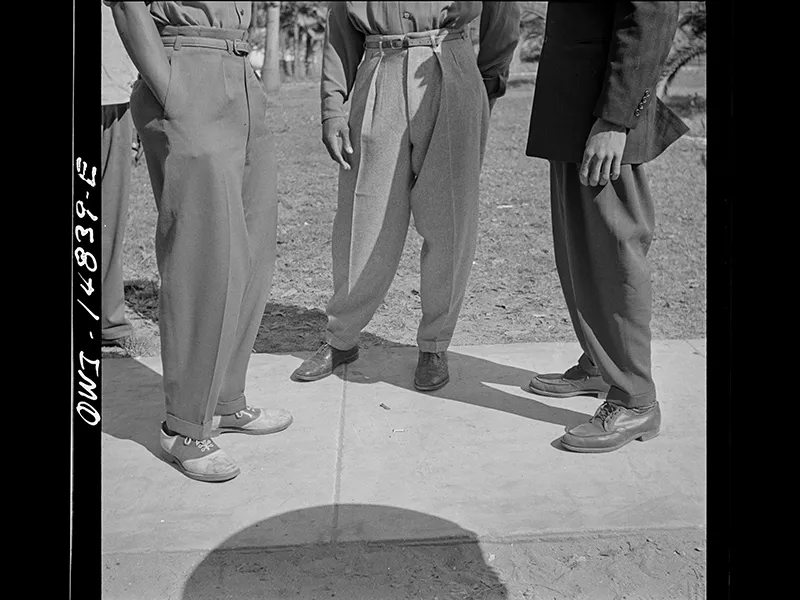A Brief History of the Zoot Suit
Unraveling the jazzy life of a snazzy style
It was June 1943 when the riots broke out. For over a week, white U.S. soldiers and sailors traversed Los Angeles beating up allegedly “unpatriotic” Mexican-American men, identifiable by their conspicuously voluminous attire. It was, as the historian Kathy Peiss writes in Zoot Suit: The Enigmatic Career of an Extreme Style, “perhaps the first time in American history that fashion was believed to be the cause of widespread civil unrest.” Starting this month, the Los Angeles County Museum of Art will feature an authentic example of one of these catalyzing ensembles as part of a new exhibition, “Reigning Men: Fashion in Menswear, 1715–2015.”
With its super-sized shoulder pads, sprawling lapels and peg leg pants, the zoot suit grew out of the “drape” suits popular in Harlem dance halls in the mid-1930s. The flowing trousers were tapered at the ankles to prevent jitterbugging couples from getting tripped up while they twirled. By the ’40s, the suits were worn by minority men in working-class neighborhoods throughout the country. Though the zoot suit would be donned by the likes of Dizzy Gillespie and Louis Armstrong, it was “not a costume or uniform from the world of entertainment,” the Chicago big-band trumpeter and clothier Harold Fox once said. “It came right off the street and out of the ghetto.’’
Fox was one among many, from Chicago to Harlem to Memphis, who took credit for inventing the zoot suit—the term came out of African-American slang—but it was actually unbranded and illicit: There was no one designer associated with the look, no department store where you could buy one. These were ad hoc outfits, regular suits bought two sizes too large and then creatively tailored to dandyish effect.
To some men, the suit’s ostentatiousness was a way of refusing to be ignored. The garment had “profound political meaning,” wrote Ralph Ellison, author of Invisible Man. “For those without other forms of cultural capital,” says Peiss, “fashion can be a way of claiming space for yourself.”
Wartime rations on fabric made wearing such oversized clothing an inherently disobedient act. Langston Hughes wrote in 1943 that for people with a history of cultural and economic poverty, “too much becomes JUST ENOUGH for them.” To underscore the style’s almost treasonous indulgence, press accounts exaggerated the price of zoot suits by upwards of 50 percent. But even the real cost of one was near-prohibitive for the young men who coveted them—Malcolm X, in his autobiography, recounts buying one on credit.
Though policemen slashed some zoot suits to ruins, the more likely reason for their disappearance once the craze faded in the 1950s was less dramatic—most were simply refashioned into other garments. Original specimens are mythically hard to come by: It took curators from LACMA over a decade to find one, and when they did, in 2011, it cost them nearly $80,000, an auction record for an item of 20th-century menswear.
But the suit had a luxuriant afterlife, influencing styles from Canada and France to the Soviet Union and South Africa. It was the subject of the Who’s first single. In 1978, the actor and playwright Luis Valdez wrote Zoot Suit, the first Chicano play on Broadway. The outfit’s iconic shape was taken up in the ’80s by Japanese avant-garde designers, who sent models down the runway in tumescent suiting around the time that MC Hammer put on his drop-crotch pants—causing outrage in the form of widespread hand-wringing over the alleged immorality of sagging pants, a style that has never quite gone out of fashion. By the time a record called “Zoot Suit Riot,” by the swing-revival band the Cherry Poppin’ Daddies, became a hit in the late-’90s, the suit’s provenance had largely been forgotten. No longer was the zoot suit evocative of the expressive power of fashion for the disenfranchised so much as it was a historical oddity known by a charming name.

/https://tf-cmsv2-smithsonianmag-media.s3.amazonaws.com/filer/49/fd/49fd4fd6-c8a7-4e3b-a725-6dd4bd013e14/apr2016_i02_phenom-wr-v1.jpg)
